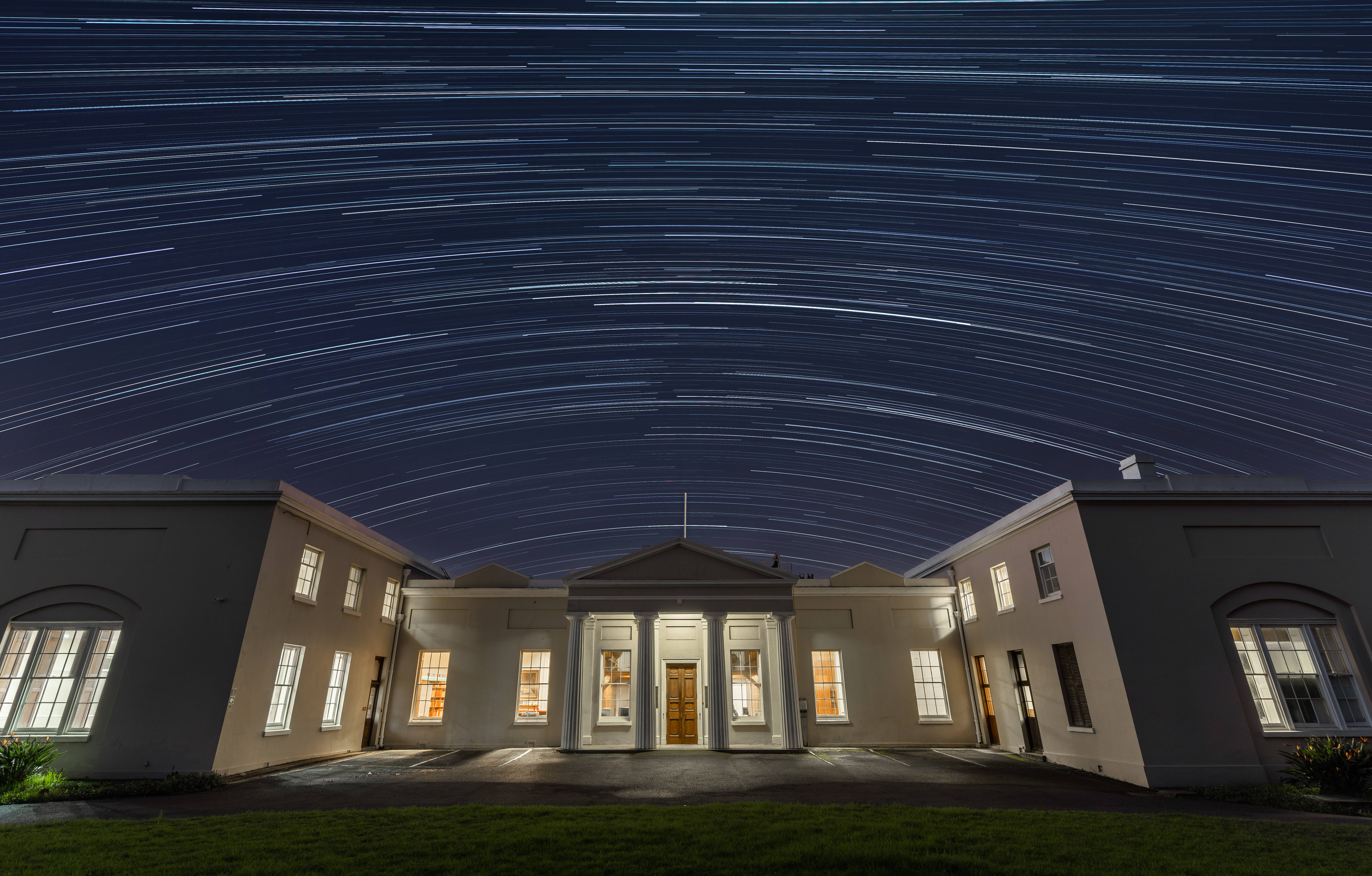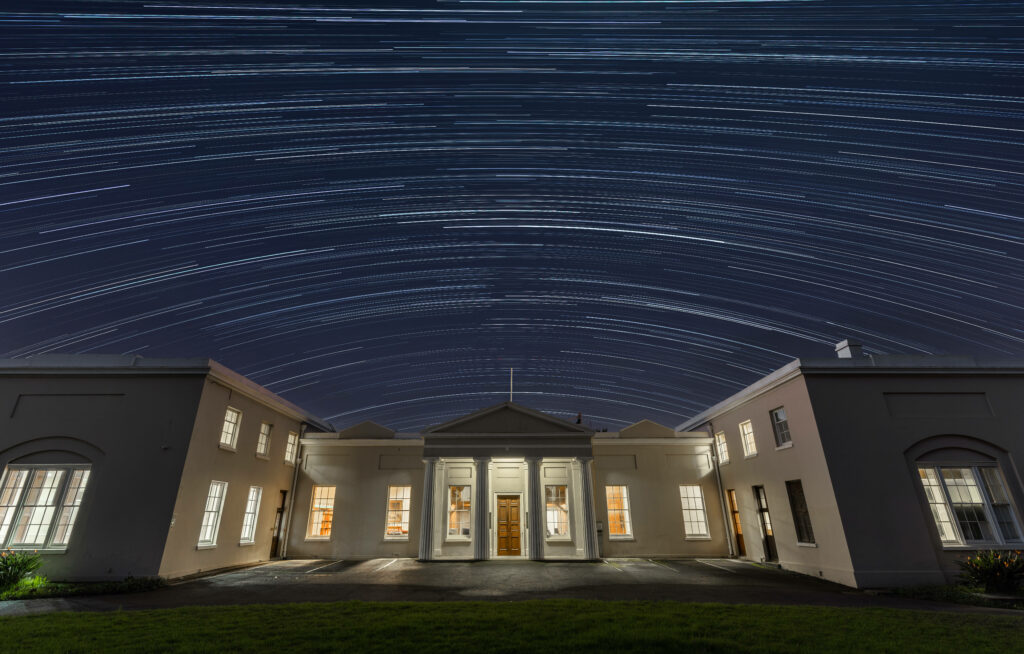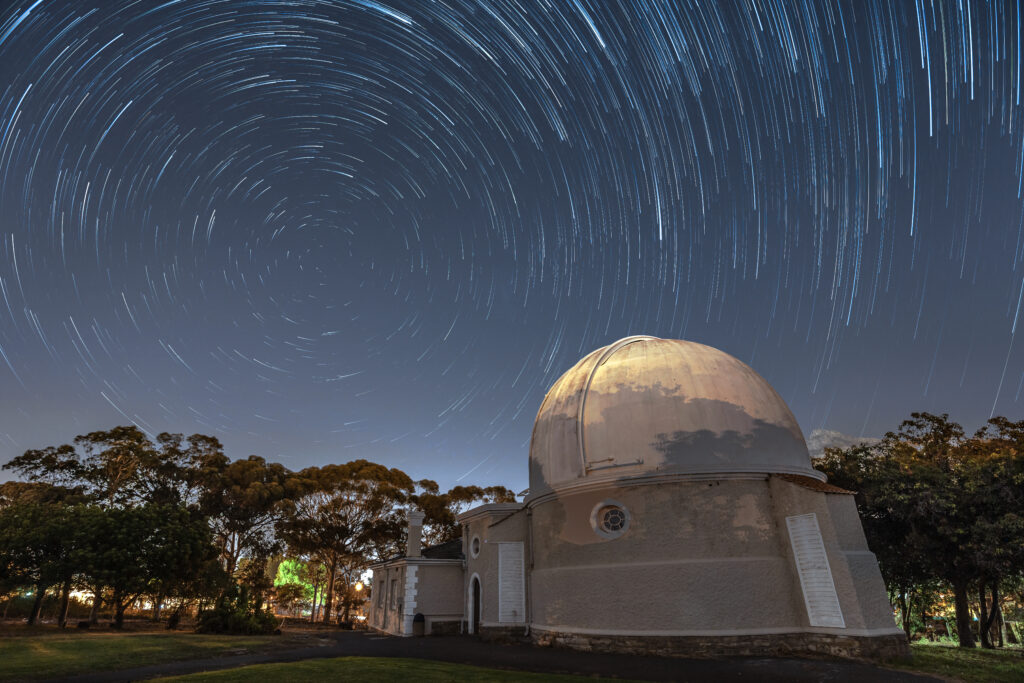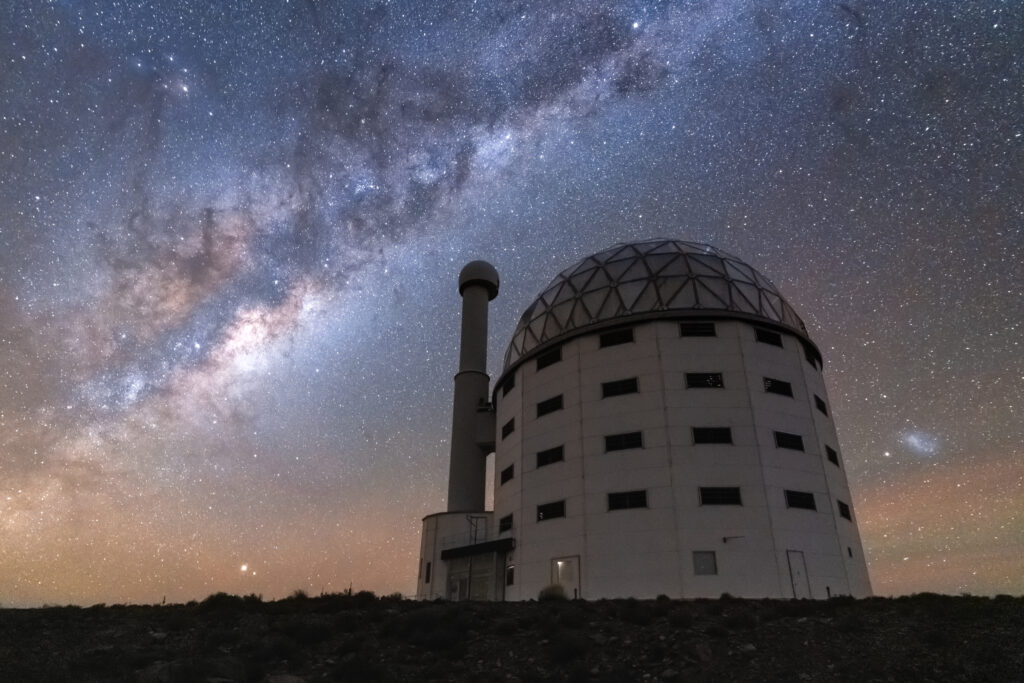
13 Oct The bicentenary of the South African Astronomical Observatory (SAAO) and the Unveiling of the SAAO as a National Heritage Site
The South African Astronomical Observatory (SAAO) will celebrate 200 years of existence as an astronomical observatory on 20 October 2020.
The Royal Observatory Cape of Good Hope was founded on 20 October 1820 and is the oldest scientific institution in the country. Formally, it was controlled by the British Admiralty and was intended for the improvement of navigation. Its main duty was to chart the southern skies and provide a time service for passing ships in Cape Town harbour. In 1971, a decision was taken to amalgamate the major facilities for optical astronomical research into one body, which became known as the South African Astronomical Observatory.

Over the years the observatory gradually became known for various important fundamental measurements and discoveries.
For much of its history, it was the major contributor to positional astronomy in the southern hemisphere. Observations made by the Cape astronomers include the first measurement of the distance to a star, the first photographic sky survey, the accurate measurement of the distance to the Sun, developments in stellar spectroscopy (which allow us to determine the motions, the temperatures, and even the chemical compositions, of the stars), the determination of the shape of the Earth in the southern hemisphere and the first accurate geodetic surveys of southern Africa.
Today, the SAAO, a National Facility of the National Research Foundation, is a vibrant modern astrophysical institute undertaking research to understand fundamental questions about the Universe. These include tracking the flow of natural elements from stars in galaxies to eventually enabling life, the prevalence of planets around other stars, small bodies in our solar system, and high energy cosmic events. The Cape Town site hosts state-of-the-art workshops for technological development, while SAAO operates the largest optical telescope in the southern hemisphere, the Southern African Large Telescope (SALT) at Sutherland, along with two dozen smaller telescopes.

The South African Astronomical Observatory, is not only known for its rich history and various contributions to science, but its buildings are also of special architectural significance. Consequently, on December 21, 2018, the South African Heritage Resources Agency (SAHRA) officially declared the SAAO a National Heritage Site and on October 20, 2020, it will host the Virtual Unveiling of the SAAO as a National Heritage Site. The campus is also of international scientific significance and has been the subject of a UNESCO World Heritage Site report.
The event is scheduled for 10 am on 20 October 2020, at the SAAO in Observatory, Cape Town and marks exactly 200 years since the founding of the Observatory. In order to ensure maximum inclusivity, the event will be live-streamed across the world.
The Department of Science and Innovation(DSI), the National Research Foundation (NRF) and the South African Heritage Resources Agency (SAHRA) will be the co-hosts of the unveiling ceremony. The Minister of Higher Education and Training, Science and Technology, the Honourable Dr B.E. Nzimande MP and the Minister of Arts and Culture, the Honourable Nkosinathi Mthethwa have been invited to participate remotely. This would mark the convergence of Arts & Culture and Science & Technology as components of our National Heritage.
SAAO Managing Director Prof Petri Vaisanen states: This occasion is an opportunity to recall some great scientific achievements. But more than that, it is an opportunity to celebrate our country’s and continent’s rich heritage in attempting to understand the universe and our place in it. In particular, we want to convey the pure excitement of exploring the amazing universe we are part of, and also highlight the many benefits that science brings to society. The theme of our event is “Beyond 200 Years of Astronomy”, and we see this future full of opportunity, inspiration, and pride in the excellence of decidedly African Astronomy at the forefront of a cutting-edge global pursuit.
The unveiling ceremony will be the pinnacle of celebratory activities during the week of the 19th to the 23rd of October 2020, including an Africa-centred Astronomy Symposium, and a virtual astronomy festival.
The presentations at the symposium will cover a wide range of topics, including, current and future science, the history of astronomy on the continent, as well as cultural and sociological aspects of astronomy. The unveiling ceremony will also launch an extended period of 200 Days of Astronomy focusing on community engagement related activities.

The SAAO will, in collaboration with Scifest Africa, host a joint Virtual Festival to celebrate Astronomy and Space Sciences during the month of October. The SAAO 200 festival will see a series of small events each week in October culminating in the online virtual festival from Tuesday to Friday 20-23 October 2020. This week will see an exciting four-day programme with talks ranging from NASA Missions, searching for life in the universe, astrotourism, to a virtual star-party event with Master KG.
2021 will see the opening of a new Visitors Centre in Cape Town that will target a diverse audience including learners, students, tourists and members of the public. The Centre will house exciting and engaging exhibits showcasing the science and technology of the SAAO and the Southern African Large Telescope (SALT), as well as multi-cultural exhibits featuring African starlore.
Astronomy is expanding across the African continent, with the newly revitalized African Astronomical Society. On the horizon is the biggest meeting on the astronomy calendar, the General Assembly of the International Astronomical Union. The meeting in Cape Town in 2024 will be the first General Assembly held on the African continent since the establishment of the Union over 100 years ago — securing the recognition of Africa’s contribution to global science.
Major Contributions to Astronomy from SAAO:
- The first observations that led to the distance of a star (Alpha Centauri) were made In 1832-33 by Thomas Henderson. The current nearest star, Proxima Centauri was discovered in 1915 by Robert Thorburn Ayton Innes who had worked previously with Sir David Gill at the Royal Observatory.
- Frank McClean, a wealthy British amateur astronomer, discovered the element oxygen in stars using the Astrographic Telescope at the Royal Observatory. In 1905 Joseph Lunt, who was one of the assistants, demonstrated the presence of silicon and europium in the spectra of the stars
- John Franklin-Adams was a British amateur astronomer who was responsible for the first photographic atlas of the whole sky. In 1903, the Southern part of his survey commenced at the Royal Observatory. It was completed in Johannesburg.
- Sir David Gill’s value for the distance between the Earth and the Sun was determined from the Royal Observatory and was regarded as the best available for 45 years.
- After receiving an amateur photograph of the Great comet of 1882, Gill realised that photography was an ideal technique for mapping the sky. During his time as the director of the Royal Observatory, he pioneered the first sky survey and was the co-leader of the Astrophotographic Congress, the first international astronomical congress, in 1887.
- Joseph Halm, who was the chief assistant, was a pioneer of stellar dynamics and also discovered the relation between mass and luminosity in stars.
- Starting in the late 1950s, Alan Cousins, developed a system for measuring the brightness of stars, and obtained precise measurements of a set of standard stars in the Southern hemisphere. This “Cousins photometric system” has since been adopted worldwide, usually being combined with the “Johnson system” developed in the USA..
- From soon after its formation SAAO became internationally recognized for its high precision photometry at visible and infrared wavelengths. This was possible because of the good site at Sutherland and painstaking work of astronomers using its telescopes. Among other things this enabled astronomers to investigate the variability of stars on timescales from milliseconds to decades and to discover new types of variable star
- Between 1997 and 2015 Michael Feast and colleagues combined data from the SAAO telescope with data from various spacecraft to investigate the structure of our galaxy and to derive a new calibration of the extragalactic distance scale.
- In 1987 a bright supernova (SN1987A – an exploding massive star) was seen in the Large Magellanic Clouds, a nearby galaxy. John Menzies obtained the first spectrum from Sutherland and the SAAO staff made a comprehensive study of SN1987A over the following months.
- In July 1994 fragments of Comet Shoemaker-Levy, 9 crashed spectacularly into Jupiter over the course of 6 days causing an international media frenzy, and images from an infrared camera on the 0.75m telescope at Sutherland were broadcast around the world.
- In 2005, the Southern African Large Telescope (SALT), a specialised spectroscopic instrument, was opened at Sutherland. It remains the largest optical telescope in the southern hemisphere. The shareholders of SALT include universities, institutions and science funding agencies from Africa, India, Europe and North America.
- In October 2017, SAAO and SALT were among the 70 ground- and space-based observatories that observed the cataclysmic explosion of two colliding neutron stars, immediately after their gravitational shock waves were detected by the U.S.-based Laser Interferometer Gravitational-Wave Observatory (LIGO) and the European-based Virgo detector. SALT and other SAAO telescopes have provided some of the very first data in what is turning out to be one of the most studied astrophysical events ever.
The South African Astronomical Observatory (SAAO) is a business unit of the National Research Foundation(NRF) and a National Research Facility which operates under the mandate of the Department of Science and Innovation (DSI).
Note: the SAAO Main Building will be illuminated with the South African Flag on the evenings of 19 and 20 October 2020 from 20:00 to 22:00. Media are invited to attend.
Additional Links:
Unveiling Live Stream: www.saao.ac.za/saao200
Symposium: saao200.saao.ac.za
Virtual Festival: astrofest.saao.ac.za
Contact:
Dr Daniel Cunnama
0825318171
